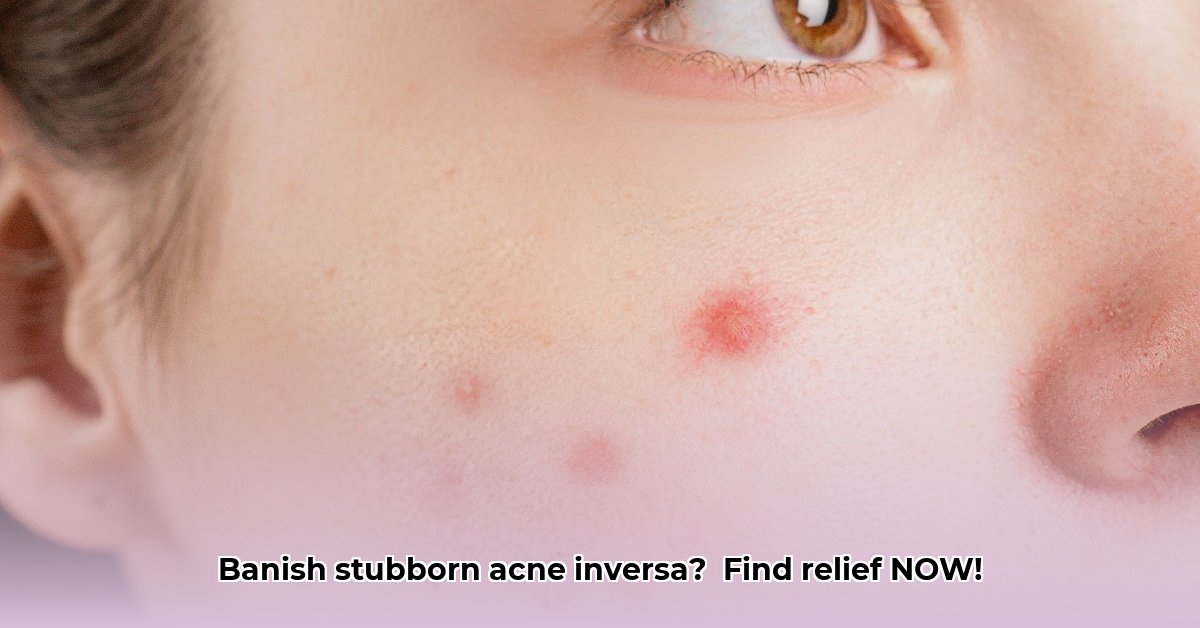
Understanding Acne Inversa (Hidradenitis Suppurativa)
Eish, dealing with acne inversa (or hidradenitis suppurativa – HS, for short) can be a real hassle. But take heart, lekker – it's a manageable condition, not a life sentence! This guide will empower you to take control and find some relief. We’ll cover everything from understanding the condition to managing flare-ups and planning for long-term well-being.
What is Acne Inversa?
Acne inversa, also known as hidradenitis suppurativa (HS), is a chronic inflammatory skin condition affecting the hair follicles, mainly in areas with lots of sweat glands – think armpits, groin, and inner thighs. It's not contagious, so you can't catch it from someone else. While the exact cause isn't fully understood, factors like being overweight, smoking, family history, and hormonal changes seem to play a role. Think of it like your skin's drainage system getting blocked, leading to painful lumps, boils, and sadly, scarring.
Recognising the Signs of HS
HS presents differently depending on its severity. Early stages might show inflamed, red, and sore bumps. As it progresses, you might notice recurring boils, tunnels under the skin, and more noticeable scarring. The severity varies greatly between individuals, with some experiencing mild symptoms and others facing more significant challenges. If you suspect you might have HS, consulting a professional is crucial. (Imagine a section here with clear images depicting the various stages of HS).
Seeking Diagnosis and Treatment
Self-treating HS is a no-no. A dermatologist (a skin specialist) is your go-to for an accurate diagnosis. They can distinguish HS from other skin conditions and formulate a personalized treatment plan. Early diagnosis is key to preventing long-term complications and improving your quality of life.
Treatment Options: A Personalized Approach
There's no one-size-fits-all solution for HS. Your dermatologist will tailor a treatment plan based on your specific needs and the severity of your condition.
1. Topical Treatments
Topical treatments are applied directly to the skin. These may include:
- Antiseptic washes: To cleanse and prevent infection.
- Retinoids (like tretinoin): To promote skin healing and reduce inflammation.
- Antibiotics (like clindamycin): To battle bacterial infections.
2. Systemic Treatments
Systemic treatments are taken orally or via injection. Options include:
- Oral antibiotics: To combat infection, but long-term use carries risks.
- Biologics (like infliximab or adalimumab): Newer medications targeting the underlying inflammation, but not suitable for everyone. Discuss potential side effects with your doctor.
- Hormonal therapy (especially for women): Oral contraceptives could sometimes offer relief.
- Metformin: Initially developed for diabetes, it might help some HS sufferers.
3. Surgical Interventions
In severe cases, surgery might be considered. Procedures may include:
- Drainage of abscesses: To relieve pressure and pain.
- Excision of affected tissue: To remove the problematic areas.
- Laser surgery: Used to target specific HS lesions.
Surgery carries the risk of scarring, so it’s usually a last resort.
Lifestyle Modifications: Making a Difference
Lifestyle adjustments can significantly impact HS management.
- Weight Management: Losing even a small amount of weight can make a noticeable difference.
- Smoking Cessation: Smoking dramatically worsens HS. Quitting is a major step towards better health.
- Hygiene: Gentle cleansing of affected areas is crucial. Avoid harsh scrubbing.
- Clothing: Opt for loose-fitting, breathable fabrics to minimize friction and irritation.
Managing Flare-Ups: Practical Tips
Flare-ups are common. Here's how to manage them effectively:
- Warm Compresses: Soothe pain and promote drainage.
- Pain Relievers: Over-the-counter painkillers like ibuprofen can alleviate discomfort.
- Rest: Allow your body to heal.
- Avoid Irritants: Protect affected areas from friction and irritating fabrics.
Long-Term Management: A Continuous Journey
HS requires ongoing management. This involves:
- Regular Dermatologist Visits: Monitor your progress and adjust treatment as needed.
- Proactive Management: Address even minor signs of flare-ups promptly.
- Mental Health Support: HS can be emotionally challenging. Don't hesitate to seek professional help if you need it.
Conclusion: Taking Charge of Your Health
Managing HS is about finding what works best for you, jou maatjie. It's a journey, not a race. With the right approach, including medical care and lifestyle changes, you can effectively manage your HS and live a fulfilling life. Remember, you're not alone, and you have the power to make a real difference in your well-being. Sterkte! (Good luck!)